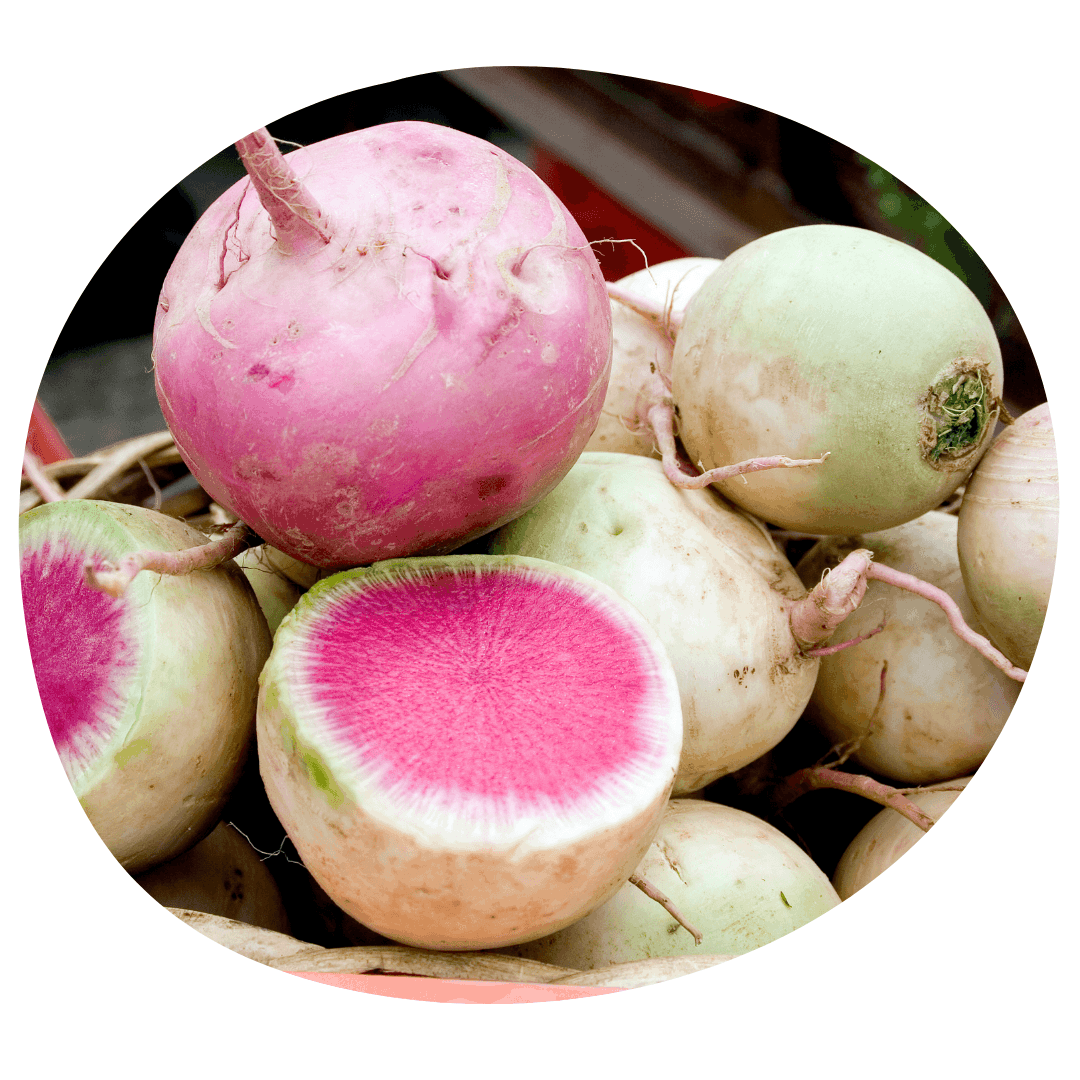How to Grow Radishes
Growing Conditions
Radishes are a fast growing, cool-season crop that prefer well-prepared soil free of rocks and debris. Because they come up so quickly, radishes are often used to delineate garden rows for slower-germinating crops, and as trap crops to draw pests away from other plants. Choose a location that drains well and receives full sun. Obstructions in the soil can cause stunted or malformed root growth. Especially when planting longer varieties like daikon radish, work the soil down to several inches deep and remove any debris. Add organic matter and till into existing soil.
Starting
Radishes can be planted as soon as the soil is workable in the spring and will germinate as long as the soil is 5°C or warmer, typically 4-6 weeks before the last frost. Sow your seeds in rows ½” deep and space plants 1" apart in rows 12" apart. Radishes need to be thinned once plants reach 2" tall to maintain proper spacing and avoid crowding the roots. For successional harvests, plant radish seeds every 1-2 weeks. Avoid planting during hot, dry spells in the summer, as plants will bolt and not produce large roots.
Find our full guide to seed starting here.

Care
Thin your radish seedlings by pinching them off at the soil when your seedlings have reached 2" in height. Allow each seedling around 3” of space. The more space you provide, the larger each root can become. You can check back in a few weeks and do a second thinning if more seedlings have popped up.
Radishes are very low maintenance. They require at least an inch of water per week and may require supplemental watering during dry spells in the summer. Mulch can help retain moisture in the soil during hot periods. Keep your beds well weeded throughout the growing season to ensure your radishes have enough room to grow.
Pests and Diseases
Radishes are often used as trap crops to draw pests away from other plants. If you're not planning to eat the radish greens, pests that do not target the root body of the radish should be of little concern unless they cause enough damage to prevent photosynthesis.
Aphids - Small green, black, or brown insects that feed on the sap of garden plants. You'll find them under leaves, at blossom tips, and in the joints of stems.
Cabbage Worms - Small green caterpillars that chew large holes in the leaves of brassica plants and other species.
Flea Beetles - Small black beetles that feed on leaves and stems, leaving holes and discoloured patches.
Crop rotation, garden cleaning, and proper spacing between plants are the best ways to prevent problems caused by pests and diseases. Diatomaceous earth can be used to control crawling pest species, while sticky traps will catch flying pests. Row covers and insect netting can also prevent travelling pests from landing on your crops and causing damage. Ensure good drainage in your chosen planting spot to prevent problems with fungus and rot. Contact us for more specialized pest control methods such as beneficial nematodes.
Harvest
Radishes are fast growers and reach maturity in 21-60 days. Reference your seed packet for each variety's days to maturity and harvest on time for the best flavour. The shoulder of the radish should be visible above the soil when they're ready. Winter radishes can remain in the ground longer but should be harvested before the first frost. Radishes can be stored in the refrigerator and their greens make a tasty addition to pesto and stir-fries.

